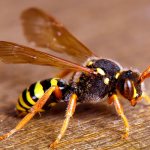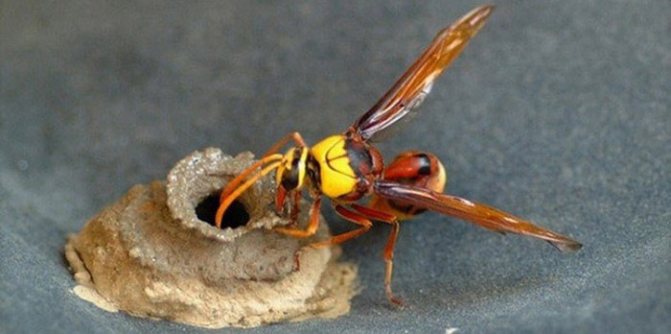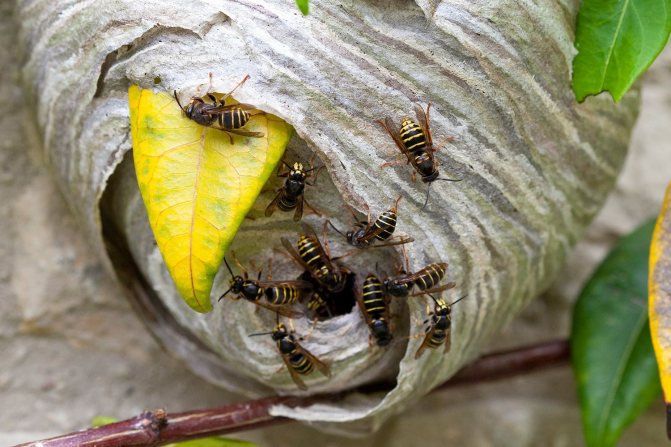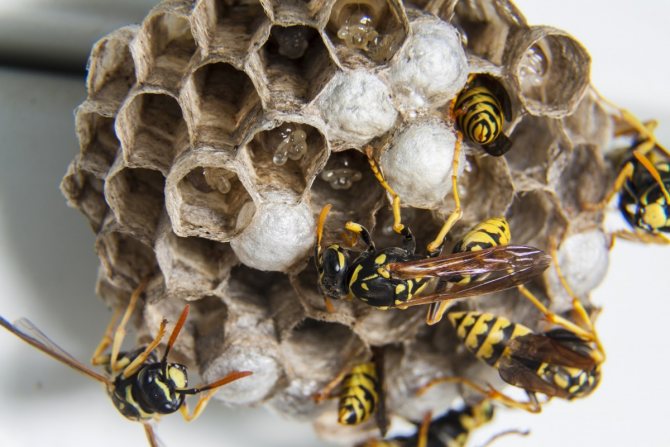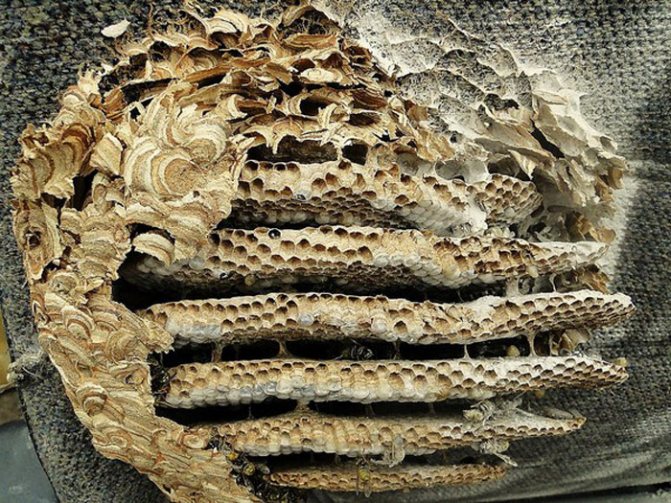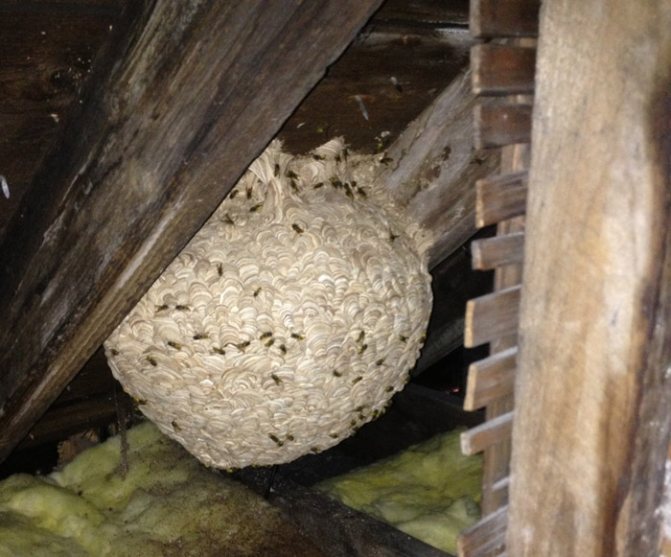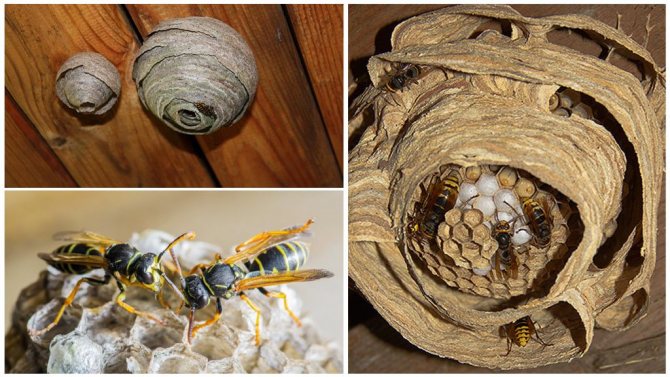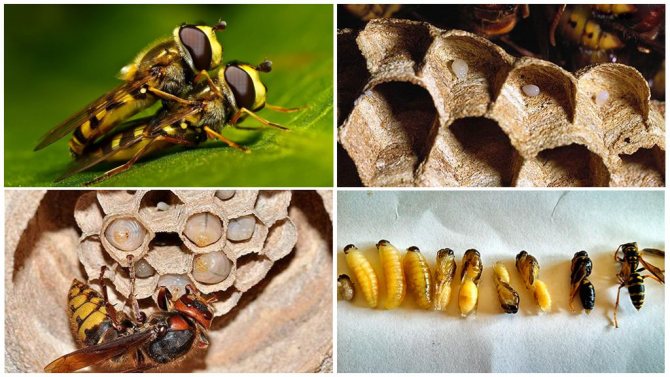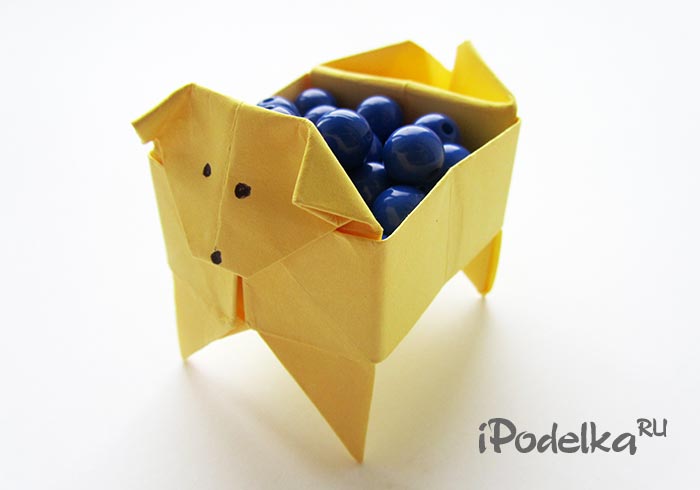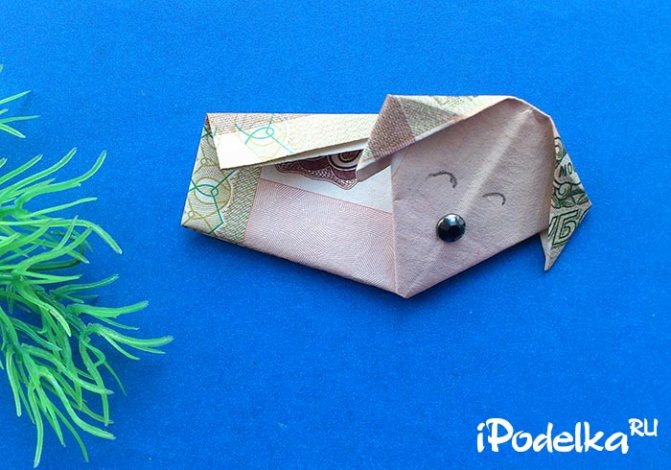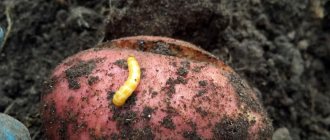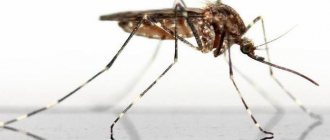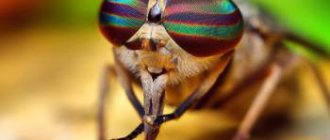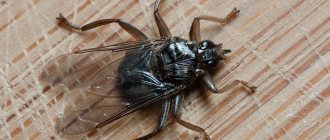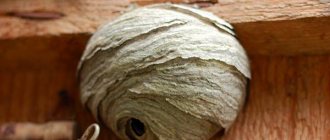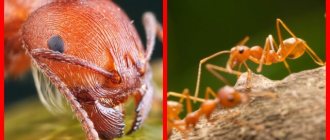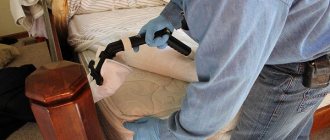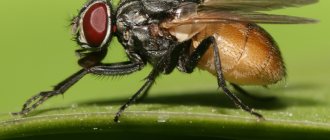Wasps are found almost everywhere and are known to everyone. They are easily recognized by their yellow-black color, small antennae and transparent wings. With the help of their sting, they are able to stand up for themselves and protect their home. At the same time, many species are known that differ from each other in size, structure, nutrition and behavior.
Wasps have an aggressive color, which clearly indicates the presence of self-defense means.
Wasp habitat and anatomy
Wasps inhabit the southern and middle zones of the globe. You can meet them both in coniferous forests and in the tropics. They do not live only in the cold Arctic, sultry Sahara and on the Arabian Peninsula. Temperatures within + 13 ... 40 ° С are an ideal habitat for wasps. They prefer to settle next to a person, because next to him you do not need to make special efforts to get food.
Wasps belong to the evolutionarily developed hymenoptera group of insects, which includes about 150 species. Their body is divided into head, abdomen and chest. The color depends on the species, but almost always black, orange and yellow shades are present.
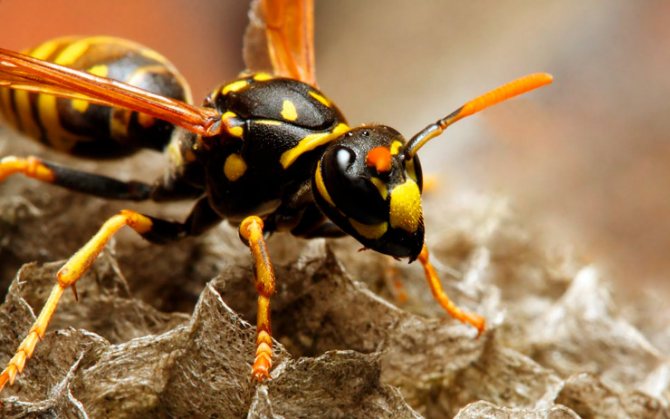
There are a large number of wasp species, the habitat of each is determined by the climatic zone.
The wings are transparent, thin, with noticeable veins, the anterior ones are always larger than the hind wings. The wings are colorless or iridescent in different colors, most often with a purple tint. Legs perform grasping, walking, burrowing functions and consist of 5 segments.
Whiskers of different lengths are located on the head. They are necessary for orientation in space and for capturing sounds and smells. The jaws are powerful, but do not contain teeth, and are very hard.
A distinctive feature of the wasp is a thin stalk of the sting, which is located in the lower part of the abdomen. It is connected to the gland, which contains poison of various toxicity. Used to defend, protect and immobilize the victim. Only females can sting. The size of the wasps ranges from 1.5 to 6 cm.
In this video you can learn more about wasps:
Insect classification
Some species feed the larvae with nectar, others can be predators or parasitic parasites. That is why insects are divided into two large groups:
- Public. They form large families of up to 1 million individuals. Nests of different sizes are built from the bark of trees. Communicate with sounds and various signals. The main mother in the family is the uterus, it is she who reproduces the offspring. The most famous representatives: folded-winged, paper, hornets.
- Solitary. Individuals live separately from each other, do not have a swarm and nests. Many of them are predators. They differ in that the females catch spiders and beetles, paralyze them with their poison, drag them into the nest and lay eggs on their abdomens. The larva develops independently. At the end it pupates and stays for the winter. The imago appears in the spring. Their venom is extremely dangerous. The following types of wasps belong to this category: road, sand, skolii, etc.
Solitary, like social species of insects, help a person to cope with pests, the only negative is their painful bites.
Insects are common everywhere. There are a huge number of species, the most famous of them are the following:
- Paper wasps. They have a black and yellow color. Nests are built from wood fibers that are glued together with their saliva.They prefer to settle in attics or wall structures of houses. Their bite is not too painful.
- Flower wasps. The smallest, as they reach no more than 1 cm in length. The color of the calf is black-yellow with a large predominance of yellow. They feed only on nectar and pollen from flowers. They build their dwellings from sand or clay. Their bites are painless, but they can cause allergic reactions.
- Hornet. Refers to an aggressive species. It grows up to 5 cm in length. It feeds on insects, which it kills with a sting. Hornets live in colonies. Their bites are painful and may subside within a few days.
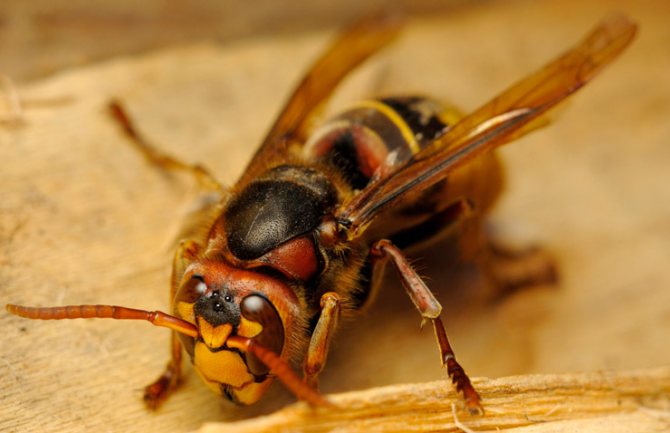

Hornets are very aggressive towards invasions of their territory. They attack in swarms, deaths from their attacks are recorded every year - Shiny wasps. Medium size. They are distinguished by a bright color with a brilliant pink and turquoise shade. Refers to parasitic insects. They feed on bees, butterflies.
- Road wasps. Lead a solitary lifestyle. They are light brown in color. They feed mainly on spiders. Minks are built in sand or earth.
- German wasps. The breast is bright orange in color, with a lot of hairs. Males are large with black wings. Females are small, their wings are completely absent. Their bites are very unpleasant.
- Scolia. In length, they reach up to 10 cm. They are classified as large. From a distance they resemble butterflies. They mainly feed on the nectars of flowers. Human bites are not dangerous.
- Typhia. A small insect of black color, but legs are red-brown. They feed on pollen, and lay eggs on beetles. Nests are not built, as they are solitary representatives and live in natural shelters.
In nature, you can also find greens, whites, reds, riders and many other species.
Building nests
Wasp nests are mainly obtained from old trees, stumps and wood materials, which is responsible for the predominantly gray color of the nests. Wasps, moving backward, scrape off particles of wood fibers with their jaws. The wasp releases a drop of saliva onto the scraped area, which softens the wood. Having collected a lump of wood fibers, the wasp transports it to the construction site of the nest. Here the lump is re-chewed by the wasp and abundantly moistened with saliva. Then the wasp sits on the edge of the nest cell and, pressing the lump to the nest wall, backing away, rolls it into a strip. Then, taking the strip with the edges of the jaws, it begins to stretch it in length. In the future, such strips are attached to one another, forming a paper wall.
The construction of the nest takes place in several stages. In the spring, the female builds the so-called. stalk, at the end of which it makes two cells. At the base of the stalk, a gradually expanding and deepening shell is built, in shape at first a bowl, and later a sphere, an outer shell. An inlet for the wasp is left in the spherical shell. A second larger one is built around the first spherical shell. Thus, the size of the nest increases. Further, near the first two cells, the female constructs others, forming honeycombs. With an increase in the number of honeycombs, the female removes the inner protective shell. The larger the nest grows, the more old protective shells and cells inside it are destroyed. The honeycombs inside the nest are arranged horizontally and are occupied by cells only on one bottom side. Further, with an increase in the size of the nest, the number of its "floors" also increases. Sometimes, by the end of the summer season, old nests can have up to ten "floors".
Paper wasps can build "multi-storey" combs, surrounding them with a shell that protects the offspring from the influence of fluctuations in temperature and humidity. The shell of the nest allows to maintain a practically constant temperature inside the nest of about 30 ° C. The main role in the construction of the nest still belongs to the working individuals.
Character and lifestyle
The lifespan is different for different sexes. Males die after mating.On average, they live 14 days. Uterine females choose a place and reproduce offspring. They live for about a year, die with the onset of cold. Young females spend the winter in the wood and become more active with the arrival of spring. In countries with a warm climate, they can live for several years.
Most of the swarm is represented by workers. They look for food, feed the larvae, protect the home. Their life expectancy is no more than 1-2 months. Wasps are quite aggressive... If disturbed slightly, they will immediately attack. At the same time, they not only sting, but also bite. And if you touch their nest, then they will all fly out together to protect their home.
At the same time, they take great care of their offspring. Solitary species bring paralyzed prey to their larvae so that they can feed for a long time. And public representatives take care of the offspring according to the hierarchy in the family.


Wasps can often build nests in people's homes, especially in villages near woodlands.
All young individuals first work as cleaners, and only then they are promoted to breadwinners.
Insects easily find their nests, even if they have flown far enough away. And if, in their absence, you move the dwelling, then it will be problematic for the wasps to find it.
Wasps nutrition depends on their species. Predatory representatives eat spiders, beetles, cockroaches, flies. After catching their prey, they release their sting into it. The poison it contains paralyzes the insect, but does not kill it. The prey meat will be fresh until the wasp starts to eat it. Herbivorous species consume nectar and pollen from flowers, as well as fruit juice and aphid secretions.
Breeding features
The female lays eggs at the public representatives. It is fertilized by a male once in the fall, and hibernates in winter. With the arrival of spring, it builds a nest and lays eggs in cells. She can lay up to 300 eggs per day, from which larvae soon appear. Then they are transformed into pupae, and those into an adult insect. At the same time, worker wasps bring food for the female and larvae. The uterus does not take care of the offspring, she is only engaged in laying eggs.
Reproduction of single wasps occurs as a result of mating. The female builds a dwelling, brings insects, which are paralyzed by poison, and lays eggs on their abdomen. Then she seals the nest, and the larvae eat the stored food. Over time, the wasps grow, leave the nest and fly away to look for a new place.
Pests and enemies
Although insects have a sting, they are still frequently attacked by other insects, mammals and birds. Therefore, even they cannot fully defend themselves.
The most common enemies are:
- Ants. They eat weak and sick individuals.
- Fan beetle. It settles in a burrow of earthen species and lays eggs on the body of young wasps.
- Hornets. They are considered killer wasps. They are large enough and capable of ruining a family in one attack.
- Wasp-eating birds. They feed their chicks with larvae and adults.
- Bears, wolverines, hedgehogs. They calmly eat wasps, as they are not afraid of their bites.
The main threat to wasps is the decline in suitable habitats. Deforestation and plowing of fields leads to the extinction of some species, so many countries carry out special conservation measures aimed at protecting them.
The main trouble with wasps is their painful bite, which can lead to allergic reactions and anaphylactic shock, and the advantage is in protecting agricultural land from harmful insects that can destroy crops.
It is interesting: what to do with a wasp bite.
Origami dog
Another animal for the paper zoo.
How to make all these origami doggies master classes with step by step photos, see here.

